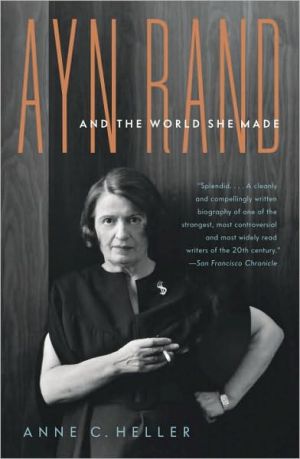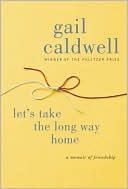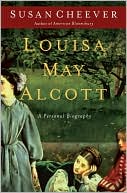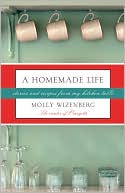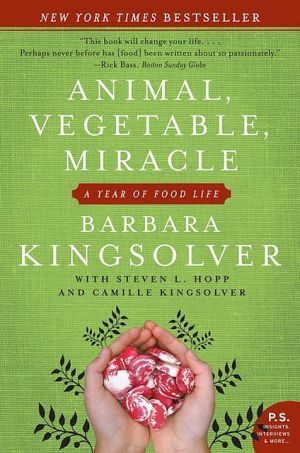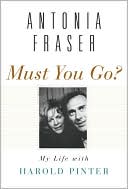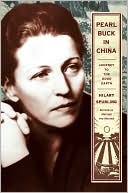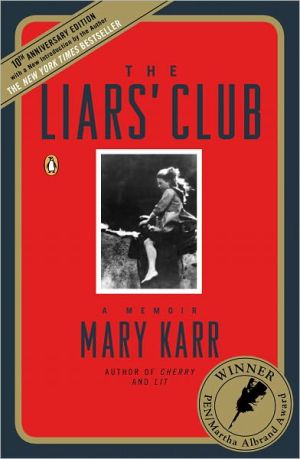Ayn Rand and the World She Made
A New York Times Notable Book A Chicago Tribune Favorite Book of the Year A San Francisco Chronicle Best Book of the Year\ Ayn Rand’s books have attracted three generations of readers, shaped the Libertarian movement, influenced White House economic policies throughout the Reagan years and beyond, and inspired the Tea Party movement. Yet twenty-eight years after her death, readers know very little about her life.\ \ In this seminal biography, Anne C. Heller traces the controversial...
Search in google:
A New York Times Notable Book A Chicago Tribune Favorite Book of the Year A San Francisco Chronicle Best Book of the YearAyn Rand’s books have attracted three generations of readers, shaped the Libertarian movement, influenced White House economic policies throughout the Reagan years and beyond, and inspired the Tea Party movement. Yet twenty-eight years after her death, readers know very little about her life. In this seminal biography, Anne C. Heller traces the controversial author’s life from her childhood in Bolshevik Russia to her years as a Hollywood screenwriter, the publication of her blockbuster novels, and the rise and fall of the cult that worshipped her in the 1950s and 1960s. Based on original research in Russia and scores of interviews with Rand’s acquaintances and former acolytes, Ayn Rand and the World She Made is a comprehensive and eye-opening portrait of one of the most significant and improbable figures of the twentieth century. The Barnes & Noble Review When Ayn Rand addressed a meeting of her publisher's sales staff shortly before the appearance of Atlas Shrugged in 1957, one of the salesmen asked her to summarise her philosophy while standing, as Rabbi Hillel had done to explain the Torah, on one leg. She did so: 'Metaphysics: objective reality. Epistemology: reason. Ethics: self-interest. Politics: capitalism.' Anne Heller tells us that the sales staff applauded, and so have many others since. Ayn Rand's books between them regularly sell half a million copies a year, and her influence has reached high places: egregious examples of her fans are Ronald Reagan and former Federal Reserve chairman Alan Greenspan. The latter belonged for many years to her inner circle, and wrote articles for her newsletter The Objectivist. Her influence continues; actress Charlize Theron is said to be planning a television mini-series of Atlas Shrugged, and there is an Ayn Rand Institute which promotes her ideas and books and offers courses on her philosophy.
chapter 1\ ONE\ BEFORE THE REVOLUTION\ 1905–1917\ y\ If a life can have a theme song, and I believe every worthwhile one has, mine is a religion, an obsession, or a mania or all of these expressed in one word: individualism. I was born with that obsession and have never seen and do not know now a cause more worthy, more misunderstood, more seemingly hopeless and more tragically needed. Call it fate or irony, but I was born, of all countries on earth, in the one least suitable for a fanatic of individualism, Russia.\ —“Autobiographical, Sketch,” 1936\ When the fierce and extraordinary Ayn Rand was fifty-two years old, about to become world famous, and more than thirty years removed from her birthplace in Russia, she summed up the meaning of her elaborate, invented, cerebral world this way: “My philosophy, in essence, is the concept of man as a heroic being, with his own happiness as the moral purpose of his life, with productive achievement as his noblest activity, and reason as his only absolute.” It was a world in which no dictator, no deity, and no well-meaning sense of duty would ever take away the moral right of the gifted individual—Ayn Rand—to live according to her own high-wattage lights.\ This was not the world she was born into. Ayn Rand was born Alissa Zinovievna Rosenbaum, a Russian Jew, on February, 2, 1905, in St. Petersburg, then the capital city of the most anti-Semitic and politically divided nation on the European continent. Later, she would say that she loathed everything Russian, and while this was not entirely true—she retained her appetite for Russian classical music and Russian sweets until the end of her life—she hated the passivity, brutality, and primitive religiosity of the Russia of her youth.\ She had good reason for this. Her birth came barely three weeks after the brief but bloody uprising known as the 1905 Revolution, where, on a bright January Sunday morning, twelve thousand of Czar Nicholas II’s cavalrymen opened fire on thirty thousand factory workers, their wives and children, labor organizers, and students who had walked to the Winter Palace to petition for better working conditions and a role in the czar’s all-powerful government. The protest was led by a Russian Orthodox priest named Father Gapon, and many marchers were said to be praying as they died. The slaughter gave rise to days of rioting throughout the city and set the stage for the Bolshevik Revolution of October 1917, which would end not in the quick and brutal suppression of the rebellion’s leaders, as this one did, but in a revolutionary coup that would shake the world and mold Ayn Rand’s worldview.\ Rand’s parents, who in 1905 were thirty-four and twenty-five and had been married for just nine months, could hear the gunfire from the windows of their new apartment above a pharmacy on Zabalkanskii Prospekt—the street on which, later that evening, the popular writer Maxim Gorky would hold a meeting of the city’s liberal intellectuals and announce, “The Russian Revolution has begun.” Rand’s father, born Zelman Wolf Zakharovich Rosenbaum but known outside the family by the non-Jewish variant of his name, Zinovy, was a pharmaceutical chemist and the manager of the shop downstairs. Her mother, a homely but self- consciously stylish woman named Khana Berkovna Kaplan, known as Anna, had been trained as a dentist but had stopped practicing after her marriage and pregnancy.\ By the time Ayn Rand was born, Zabalkanskii Prospekt and the streets around it were calm again. It was an illusory calm: all over Russia and the vast Russian territories to the south and east, massive labor strikes, anti-czarist peasant insurrections, and anti-Jewish violence were erupting. This would continue, in waves, until 1914, when World War I briefly united the nation against the Germans, and would grow yet more explosive from 1915 to 1919, when the country was war torn and starving. Meanwhile, Marxist political organizations, their leaders in and out of exile in Siberia and Europe, gained a following.\ In these years, it was dangerous to be a Jew. As the economy deteriorated and the czar grew more repressive, the brunt of popular anger often fell upon Russia’s five million Jews. At Czar Nicholas II’s court, as elsewhere in Europe, Jews had long been identified with the supposedly pagan notions of a money economy, urbanization, industrialization, and capitalism. Given traditional Russian fear of modernity and fierce anti-Semitism, Jews were ready-made scapegoats onto whom the czar, the landowners, and the police could easily shift workers’ and peasants’ resentment for their poverty and powerlessness.\ For Jews outside the capital city, this period brought the worst anti- Semitic violence since the Middle Ages. In the fall of 1905 alone, when Rand was not quite a year old, there were 690 anti-Jewish pogroms and three thousand Jewish murders. In one pogrom in Odessa, in the Crimea, where Rand and her family would relocate in 1918, eight hundred Jews were killed and one hundred thousand were made homeless. The czar’s police were said to have supplied the largely illiterate Russian Orthodox rioters with arms and vodka.\ St. Petersburg was relatively safe from pogroms, which was one reason the Rosenbaums had migrated there. But it had its own complicated forms of official anti-Semitism. By 1914, the statutes circumscribing Jewish activities ran to nearly one thousand pages, and anything that wasn’t explicitly permitted was a crime. For decades, Jews who didn’t possess a trade or profession useful to the czar were barred from St. Petersburg; in most cases, unqualified Jews couldn’t even visit for a night. By law, Jews made up no more than 2 percent of the city’s population, and residency papers had to be renewed each year. Jews often changed their names to avoid detection. They and their homes were subject to police searches at all times. Rand’s father, who was born in the poor and pogrom-ridden Russian Pale of Settlement—a vast checkerboard of Jewish ghettos encompassing much of Lithuania, Latvia, and Poland—went variously by the names Zelman, Zalman, and Zinovy. He seems to have become a pharmacist, at least in part, because this was one of the professions that permitted Jews to enter the city relatively freely. But the laws were fickle and crafted to give the czar maximum flexibility, and arrest and/or exile were a constant danger.\ It was in this volatile and often frightening atmosphere that Rand grew up. She was the eldest of three daughters of this upwardly mobile pharmacist and his religiously observant, socially ambitious wife; Anna would later appear in her daughter’s novels as a series of superficial or spiteful characters. When Rand was two and a half, her sister Natasha was born; when she was five, her youngest and favorite sister Eleanora, called Nora, entered the family.\ By the time Nora was born, in 1910, Zinovy had advanced to become the manager of a larger, more centrally located pharmacy. The Zabalkanskii drugstore, along with one a few streets away, in which the young chemist had worked before his marriage, were owned by Anna Rosenbaum’s sister, Dobrulia Kaplan, and her husband, Iezekiil Konheim; the new store, called Aleksandrovskaia, belonged to an affluent and professionally distinguished German Lutheran merchant named Aleksandr Klinge. Klinge’s shop faced Znamenskaya Square on the Nevsky Prospekt, the city’s resplendent main thoroughfare, built extra wide by Peter the Great to accommodate his cavalry and canons against the insurrections of the eighteenth century. Zinovy, now newly established among the Jewish bourgeoisie, moved his wife and daughters into a large, comfortable apartment on the second floor, adjoining the pharmacy. Another one of Anna’s sisters and her husband, a prosperous medical doctor named Isaac Guzarchik, settled with their two daughters on the floor above. There the family lived until they fled the starving city for the Crimea in the wake of the October 1917 Revolution.\ Intelligent, self-directed, and solitary from an early age, Rand must have been a difficult child to raise in the first decade of the twentieth century. In spite of the era’s violence and turmoil, the ambience was Victorian: the fashions were for frills, family loyalty, and the feminine arts, all of which went utterly against her grain. Some of her earliest memories were of being unreasonably treated in such matters by her mother, who was the dominating personality in the household and even at times “a tyrant.” In one memory, during the family’s move to the Nevsky Prospekt apartment, Rand and her younger sisters were sent to stay with a neighboring aunt and uncle, perhaps the Konheims. When they returned to Rand’s new home, she asked her mother for a midi blouse like the ones she’d seen her cousins wearing. Anna Rosenbaum refused. She didn’t approve of midi blouses or other fashionable garments for children, Rand recalled fifty years later. Anna was serving tea at the time, and—perhaps as an experiment— Rand asked for a cup of tea. Again her mother refused; children didn’t drink tea. Rand refrained from arguing, although even then the budding logician might have won the argument on points. Instead, she asked herself, Why won’t they let me have what I want? and made a resolution: Someday I will have it. She was four and a half or five years old, although all her life she thought that she had been three. The elaborate and controversial philosophical system she went on to create in her forties and fifties was, at its heart, an answer to this question and a memorialization of this project. Its most famous expression was a phrase that became the title of her second nonfiction book, The Virtue of Selfishness, in 1962.\ Rand’s first memory is worth describing here. The future author of Atlas Shrugged, a novel whose pulse is set by the rhythms of a great American railroad, recalled sitting at a window by her father’s side, aged two and a half, gazing at Russia’s first electric streetcars lighting the boulevard below. Her father was explaining the way the streetcars worked, she told a friend in 1960, and she was pleased that she could understand his explanation. Although she did not know it then, the American company Westinghouse had built the streetcar line, in a gesture to the city’s workers from the embattled czar. Such seeming coincidences—this one suggesting that even as a young child she showed an affinity for the bright beacon of American capitalism—abound in Rand’s life, and later became the threads from which she and her followers would spin her legend.\ While the czar’s regime grew more unpopular, and the Marxist Mensheviks and Bolsheviks competed for the allegiance of the nation’s workers, the Rosenbaums prospered. In 1912, Rand’s father became the co-owner of Klinge’s pharmacy, a thriving business that employed not only Klinge and Zinovi, but also six assistant pharmacists, three apprentices, and a number of clerks. In 1914, at the outbreak of World War I, Klinge transferred full ownership of the drugstore to Zinovi, presumably because, as the Russian troops advanced against the German army to the west, anyone bearing a German name was even more at risk than a Jew in the streets and government offices of St. Petersburg. As Zinovi’s income grew, he bought the deed to the building that housed both the store and the family apartment. Anna hired a cook, a maid, a nurse for her daughters, and even a Belgian governess to help the three girls improve their French before they entered school, French being the common language of the Russian educated classes. The girls also took music and drawing lessons.\ Rand respected her father and strongly disliked her mother, whom, oddly, she called by the Russian variant of her patronymic, Borisovna. From the beginning, she and Anna Rosenbaum did not get along. The daughter viewed her mother as capricious, nagging, and a social climber, and she was painfully convinced that Anna disapproved of her. Anna considered her eldest daughter to be “difficult,” Rand recalled. It’s easy to imagine that she was. Although formal photographs from the time show a beautifully dressed, long-haired little girl with an arresting composure and huge, dark, intelligent eyes, her face is square and her features are slightly pudgy; when animated, they assume the stubborn, hawkish look of her adulthood. She had few friends and little inclination to make new ones, and she was physically inert in an era of passionate belief in physical exercise. Her mother nagged at her to be nicer to her cousins and more outgoing and athletic (“Make motions, Alice, make motions!” Anna would cry) and was exasperated by her penchant for becoming violently enthusiastic about the things she liked—certain European children’s stories and songs, for example—and immovably indifferent, even hostile, to the things she didn’t. But Anna also articulated many of the values that Rand would later become famous for expressing. In a letter from the 1930s, for example, Anna wrote to Rand, “Every man is an architect of his own fortune” and “Every person is the maker of his own happiness.” Anna liked the idea of America and wanted to visit; she even named the family cats after American states and cities.\ Anna came from a more privileged background than Zinovy did. She seems to have been born and raised in St. Petersburg, which was a marked advantage in the late nineteenth and early twentieth centuries, and this gave her an air of sophistication and social polish that her husband lacked. Anna’s father, Rand’s maternal grandfather, was a prosperous St. Petersburg tailor named Berko (or Boris) Itskovitch Kaplan who owned a factory that made military uniforms for the czar’s guards, an occupation that would have afforded the family some protection in times of trouble. Anna’s mother, Rand’s grandmother, named Rozalia Pavlovna Kaplan, was a pharmacist, just as Zinovy and Anna’s sister Dobrulia’s husband were. All lived within a few streets of one another, including the Konheims, the Guzarchiks, and two of Anna’s brothers, Josel and Moisha, called Mikhail. Since many members of Anna’s extended family also lived nearby, and at least a few of Zinovy’s eight brothers and sisters eventually joined him in St. Petersburg, Rand grew up surrounded by a sizable Jewish clan.\ Anna was also more broadly, and proudly, educated than her husband was. She read and spoke English, French, and German, and until the Belgian governess arrived she taught Rand and Natasha to read and write in French. Though Rand made good use of these advantages as she grew older, she viewed her mother as hypocritical and shallow, an opinion not entirely borne out by the evidence. She once characterized Anna as an aspiring member of the St. Petersburg intelligentsia whose main interest in life was giving parties, and she suspected that Anna enjoyed books and plays less than she enjoyed the appearance of talking about them at her frequent gatherings of family and friends. Anna subscribed to foreign magazines, including children’s magazines, which Rand read and was strongly influenced by as she began to write her own early stories. Still, until the 1917 Revolution changed everything, Anna seems to have been an artistic social climber (though a remarkably intelligent and resourceful one, as we shall see) who wanted her daughters to rise in the city’s Jewish social hierarchy—a project for which Ayn Rand was particularly unsuited.
1 Before the Revolution: 1905-1917 12 Looters: 1917-1925 223 Freedom to Think: 1926-1934 524 We Are Not Like Our Brothers: 1934-1938 815 The Fountainhead: 1936-1941 1076 The Soul of an Individualist: 1939-1942 1237 Money: 1943 1498 Fame: 1943-1946 1619 The Top and the Bottom: 1946-1949 18510 The Means and the End: 1950-1953 21811 The Immovable Mover: 1953-1957 24512 Atlas Shrugged: 1957 27013 The Public Philosopher: 1958-1963 29114 Account Overdrawn: 1962-1967 31715 Either/Or (The Break): 1967-1968 35216 In the Name of the Best Within Us: 1969-1982 383Afterword 411Acknowledgments 415Abbreviation Key 417Notes 419Selected Bibliography 529Permissions Acknowledgments 541Index 543
\ From Barnes & NobleAyn Rand was only twelve when the Russian Revolution struck, but this brilliant young Jewish girl could not but notice the devastating effects it had on her St. Petersburg family. Her father lost his business; the family fled temporarily to the Crimea; and Rand herself suffered academic setbacks because of the new regime. Anne Heller's Ayn Rand and The World She Made shows how these brutal events irrevocably shaped the subsequent life of the novelist/philosopher. Her signature credos of individualism and unmitigated self-determination imbued not only The Fountainhead and Atlas Shrugged, but, as Heller notes, her marital life. Within her group (which include the youthful Alan Greenspan), however, Rand sometimes resembled a Stalinist dictator, exacting obedience and loyalty even about relatively small matters. This breakthrough biography places Rand in a sharp new light. Now in paperback.\ \ \ \ \ \ Janet MaslinMs. Heller has delivered a thoughtful, flesh-and-blood portrait of an extremely complicated and self-contradictory woman, coupling this character study with literary analysis and plumbing the quirkier depths of Rand's prodigious imagination.\ —The New York Times\ \ \ Adam Kirsch…would-be Galts ought to hear the story Anne C. Heller has to tell in her dramatic and very timely biography, Ayn Rand and the World She Made…Heller maintains an appropriately critical perspective on her subject—she writes that she is "a strong admirer, albeit one with many questions and reservations"—while allowing the reader to understand the power of Rand's conviction and her odd charisma.\ —The New York Times Book Review\ \ \ \ \ Publishers WeeklyAlissa Zinovievna Rosenbaum was born to Jewish parents in 1905 Russia. Ayn Rand left Russia in 1926 for America and founded her anticollectivist philosophy, Objectivism, a philosophy of free market capitalism and the pursuit of self-interest as a moral good. Depressive, pill-taking, chain-smoking and manipulative, Rand's life was defined by a longtime Sunset Boulevard–like affair with Nathaniel Branden, who went on to start the self-esteem movement. At the same time, the combustible Rand was married to a passive man with matinee-idol looks. Magazine editor and journalist Heller competently describes Rand's feuds with William F. Buckley and with her sister, who had remained in the U.S.S.R., and the more courtly relationship Rand had with publisher Bennett Cerf. This objective account of the Objectivist Rand will interest her still large and devoted readership. Photos. (Nov. 3)\ \ \ \ \ Library JournalThere is a scene in Heller's biography where the controversial writer Rand and her husband delight in the fact that they can select from the more expensive items on a cafeteria menu after selling the movie rights of The Fountainhead. The scene illustrates Heller's ability to capture the essence of her subject. Rand, never a fan of the poor masses, was elated to remove herself from the mob. Although Heller was denied access to the Ayn Rand Institute's archives, because she is not an advocate for Rand's ideas, she still performs beautifully. Heller conducted over 50 interviews, including three long interviews with Rand's former lover, Nathaniel Branden. She traces Rand's childhood in Russia; her arrival in America; her unconventional marriage to actor Frank O'Connor; her work as a playwright and novelist; the development of objectivism, Rand's philosophy that embraces capitalist individualism and rejects altruism; and her long-standing extramarital affair. VERDICT An impartial, well-documented, and sweeping biography for fans and scholars of Rand; with a bibliography and 100-plus pages of notes.—Stacy Russo, Chapman Univ. Libs., Orange, CA\ \ \ \ \ Kirkus ReviewsThe long career and cluttered personal life of the writer who said she owed no philosophical debts to anyone but Aristotle. In her debut, magazine journalist and editor Heller calls herself a "strong admirer" of Ayn Rand (1905-1982), who was born in Russia as Alissa Zinovievna Rosenbaum. "Ayn" (rhymes with "mine") was her father's nickname for her; no one knows the source of "Rand." Heller's admiration is most evident in her diction-throughout, she employs terms like "breathtaking" and "farsighted and brave"-but because she is not purely partisan, she was denied access to the Ayn Rand archives. Still, the author's research is formidable-her endnotes cover more than 100 pages-and she ably highlights the hues of Rand's dark side(s). The founder of the philosophy of Objectivism and author of perennial bestsellers The Fountainhead (1943) and Atlas Shrugged (1957) could be petty, vindictive, disingenuous, deceptive and profoundly needy. She frequently quoted her characters as if they were real, and she maintained a secret sexual relationship with the much younger Nathaniel Branden, who was her designated financial and intellectual heir until he betrayed her for a younger woman. Heller spends a large portion of the narrative following the arc of the Branden relationship (he was married, as well), and its complexities and intensities ultimately became pathetic and wearisome. Heller examines Rand's Russian girlhood (she was a brilliant loner), her emigration and arrival in New York City, her sojourns in Hollywood-where she worked on screenplays and met future husband, actor Frank O'Connor-her struggles to write her massive novels and her battles with the Left. However, the author neverconvincingly explains Rand's powerful personal magnetism. A treatment sometimes vitiated by the author's affection for her subject, but the most thorough we're likely to see until Rand's papers become more accessible.\ \ \ \ \ The Barnes & Noble ReviewWhen Ayn Rand addressed a meeting of her publisher's sales staff shortly before the appearance of Atlas Shrugged in 1957, one of the salesmen asked her to summarise her philosophy while standing, as Rabbi Hillel had done to explain the Torah, on one leg. She did so: 'Metaphysics: objective reality. Epistemology: reason. Ethics: self-interest. Politics: capitalism.' Anne Heller tells us that the sales staff applauded, and so have many others since. Ayn Rand's books between them regularly sell half a million copies a year, and her influence has reached high places: egregious examples of her fans are Ronald Reagan and former Federal Reserve chairman Alan Greenspan. The latter belonged for many years to her inner circle, and wrote articles for her newsletter The Objectivist. Her influence continues; actress Charlize Theron is said to be planning a television mini-series of Atlas Shrugged, and there is an Ayn Rand Institute which promotes her ideas and books and offers courses on her philosophy.\ On the Ayn Rand Institute's website there is a video of its heroine being interviewed. In it her emphatic, confident, heavily-accented phrases roll unhesitatingly off her tongue in perfect prose (few people, pace Moliere, speak in prose), and her interviewer appears too overwhelmed to challenge the misapprehensions that stud her remarks. In the interview she gives another encapsulation of her ideas: her philosophy, she said, is based on 'the concept of man as an heroic being, with his own happiness as the moral purpose of his life, with productive achievement as his noblest activity, and reason as his only absolute.' She always used the word 'man' in speaking of the egoistic, self-assertive, independent hero who was her ideal -- Howard Roark in The Fountainhead, John Galt in Atlas Shrugged -- and correlatively held that it is women's work to worship the masterful hero, even to submit with pleasure (as in The Fountainhead) to being raped by him.\ Many find attractive the idea of individualistic self-interest coupled with disdain for anyone who cannot assert himself likewise. Those who embrace such views find it easy to accept their corollaries, which are that the only morally acceptable social and political system is free-market capitalism, and that individual self-interest positively outlaws altruism. 'Do not confuse altruism with kindness, good will or respect for the rights of others,' Rand wrote. 'The issue is whether you do or do not have the right to exist without giving [a beggar] a dime.' She attacked those who located the basis of rights in need rather than achievement; for her this was to stand both reason and morality on their heads. She saw promotion of individualism and opposition to collectivism as the only legitimate morality, not only in politics 'but within a man's soul'. This, she wrote in her notebooks, defined the theme of The Fountainhead, the story of the morally autistic architect-hero Howard Roark's struggle with lesser human beings.\ The close identification of these ideas with Ayn Rand's name shows how intimately her life and thought were one thing. A biography of Rand therefore has to consist largely in an exposition of her philosophy and an exploration of its effects on her personal life and those around her. Heller's Ayn Rand and the World She Made reports both with unblinking thoroughness. She confirms what one surmises from the novels and essays themselves: that Rand was a brilliant but repulsive person, who inveighed against tyranny but was a tyrant, and who demanded loyalty from the disciples of her philosophy of individualism and independence, oblivious to the stark paradox involved. The members of her inner circle called themselves 'the Collective' as a joke; some of them came to realise too late just how ironic the label was, for Rand in effect organised her devotees into a cult from whose teachings any deviation -- least of all into the individual independence she vaunted -- was regarded as an unforgivable crime.\ Indeed the microcosm of the Randian cult was a reprise of every historical example of actual or would-be revolutions that have devoured their own, most notably in the case of her standard bearer in the high years of her fame, Nathaniel Branden. At first every bit as tough and tyrannical in the cause of Rand's ideas as Rand herself, and moreover Rand's lover though considerably younger than she, Branden was the activist and exponent who turned Rand from a novelist-prophet into a designer label, a phenomenon, and a force. He had been at her side for nineteen years, since he was a young college student. But he crashed from favour when he no longer wished to have sex with her after falling in love with a beautiful young woman who had, in Rand's view anyway, neither the intellect nor the spirit required to match Randian ideals. When Rand discovered Branden's 'betrayal' she exploded into a jealous fury, anathematizing him as completely and violently as any Congregation of the Inquisition equipped with bell, book and candle. In the Objectivist magazine Branden had started on her behalf she wrote that he (and his former wife Barbara) were no longer associated with the magazine, with her, or with her work and thought, and that she repudiated them 'totally and permanently as spokesmen for me or for Objectivism'.\ As the Branden affair shows, Rand's life was indeed exemplary of her thought. It was, in line with her avowed principles, an entirely selfish life, to which she sacrificed her family, her good-natured husband, Frank O'Connor, her friends, and all but the last of her devoted followers, Leonard Peikoff. Whoever was not wholly with her was against her. This too was in line with her philosophy, only this time not with its principles but its character: it was black-and-white, without nuance or flexibility, harsh, angry and simplistic. Its appearance of unyielding logic was employed as a smokescreen for absence of compassion and kindness, for the inability or refusal to accept that most people cannot be Roarks and Galts through no fault of their own, and that therefore an educated generosity of sentiment can and should figure among the premises of our choices and the actions that flow from them. Such a thought would have seemed to her too disgusting to contemplate; which in the view of anyone with a shred of social conscience makes her thought too disgusting to contemplate in return.\ Heller shows how Rand's beliefs emerged from her early experiences. Born Alissa Zinovievna Rosenbaum to middle-class parents in St. Petersburg, Russia in 1905, she lived through the revolutions of 1917 (she supported Kerensky and the Mensheviks) and the subsequent eight years of Bolshevik hardship before getting a visa to visit America, where she had relatives. She never returned to Russia, but changed her name to Ayn (rhymes with 'wine') Rand, and began a career on the margins of the Hollywood movie industry. Ascending from wardrobe worker to bit-part screen writer to playwright to novelist she developed her very considerable talents to a pitch of genius, which resulted in her first major triumph, The Fountainhead, published in 1943. It was made into a film in 1949, based largely on her own screenplay for it, but she quickly became dissatisfied with it.\ The reputation that the novel earned for her made her a significant enough figure to be called to testify before the House Un-American Activities committee in Washington concerning communism in Hollywood. It also initiated the gathering of supporters and admirers who became the slave army of her cult.\ Rand's principal work is Atlas Shrugged, which tells the story of John Galt, a businessman who, irritated by regulations that impede getting rich, goes off in a huff to a secret valley, taking many of the business community with him. Without them the world collapses and its tiresome little lesser men, the collective-minded wishy-washy liberals, come running to ask them back. (This is scarcely a caricature.) Rand devoted many years to its composition, and her devotees believed, as she did, that it would revolutionise the world. But on publication it met with a storm of critical abuse. One critic described it as a nightmare, another as the 'howl' of a harpy, a third as a 'display of grotesque eccentricity' that one could not find 'outside an insane asylum.' Heller, otherwise dispassionate to the point of coolness towards Rand throughout the book, here offers an at least partial defence of the novel's literary merits: the critics ignored, she says, its 'breadth of scope, jaw-dropping integration of unfamiliar ideas into a drumbeat plot, Dickensian keenness of eye...' As Rand's sales figures permanently testify, readers did not share the critics' views. But the almost uniformly hostile critical reception plunged Rand into a deep depression, and she never wrote fiction again.\ Still, Rand's growing celebrity -- much abetted by Branden's indefatigable marketing of her and her ideas -- made her an iconic figure from the 1960s onwards. Students at universities gave her standing ovations, and some professors -- most of whom were dismissive of her -- rallied to her too. She was given an honorary doctorate, and appeared on prestigious television interview programmes. Decades later her books were still being cited in polls of American readers as among the most influential they had read, in one case placing Atlas Shrugged second only to the Bible in a list of the most important books of the twentieth century.\ I can testify personally to her influence during the heady decade of the 60s. As a high school junior I had an affair with a woman some years older than myself, who was student at a local teachers' college. She and her peers were avid followers of Rand, and I count myself the happy beneficiary of a sentimental education that was, presumably, a by-product of the young lady's Randian self-interest. Despite her efforts at proselytizing me into Rand's tenets I did not succumb; I was, as all youth should be, on the Left, and too far so to find Rand's ideas other than appalling.\ What is wrong with Rand's views is what is wrong with Gordon Gekko. The unregulated market coupled with unbridled individual self-interest adds up to something far from heroic in the would-be Roark/Galt mode; instead it adds up to the strong trampling the weak, to the callousness of the jungle -- and eventually to a mightily ironic paradox, which is that the weak have to rescue the strong because the latter's unrestricted rampaging has consumed their own hunting-grounds. Only look at the moneymen of autumn 2008, who because of their reckless gambling with other people's money, in a market deregulated by Rand's epigones, had to be bailed out by the sacrifice of this small guy losing his job and his home, and that small guy's tax dollars funding the gargantuan bail-out that rescued the oh-so-heroic Galts of the financial markets.\ Life is Rand's refutation. Unless you are prepared to embrace the brutal view that you care nothing about the inequalities and injustices which make the many start their race far behind the few, you cannot see the world as a place where the individual must stand alone or starve to death. The impulse that makes a woman comfort her crying infant generalizes into the impulse most people have to help someone who trips and falls, or is stricken by grief, or is starving. And that impulse is educable into one that sees the need for food aid to starving populations, and human rights campaigns on behalf of prisoners in secret policemen's cellars in tyrannous countries. It is not one jot admirable that Rand did not grasp this, or refused to.\ Heller quotes the philosopher Sidney Hook's review of Rand's nonfiction account of her Objectivist philosophy, For the New Intellectual, which Gore Vidal in another review described as 'nearly perfect in its immorality': 'I am confident that even at some danger to herself,' wrote Hook, 'Miss Rand would not rush out of a burning building and leave a helpless child behind.' He argued that she was wrong to think free minds could not exist without free markets, and that it had to be ignorance or willfulness not to recognise that capitalism had created many evils, such as (or just one of a million examples) child labor in Victorian Britain.\ Hook also pointed out that Rand misunderstood a philosopher she claimed to admire, namely, Aristotle; and one should add that she also grossly misunderstood a philosopher she claimed to despise, namely Kant. These are illustrations of what Hook meant when he remarked (as Heller reports him) that 'although a writer need not be a professional philosopher to write an interesting book about philosophy, substituting indignation for analysis was not the way to do it.'\ Contemporary followers of Rand, of whom there are undoubtedly many, will conclude that Heller's cool and sharp-eyed portrait of Rand puts her into the Branden camp -- that is, into the camp of her enemies. The Randian principle of 'who is not with us is against us' will apply. But that would do Heller's deeply absorbing book an injustice. Rand could be and most often was a harpy, but Heller shows that she had her vulnerabilities and insecurities, and is scrupulously fair to her, especially in connection with her battles with critics. And there are affectionate portraits of some of the supporting cast in this tumultuous story, of Frank O'Connor and Barbara Branden especially, and of the eager young who flocked to hear about Objectivism and self-assertion, and filled the lecture halls where Rand and Branden spoke.\ Rand's novels are melodramatic -- they are somewhat like circumstantial film treatments with long speeches inserted -- and the ideas in them are simplistic, but (as I rediscovered on re-reading the two major works for this review) they are powerful page-turners, with much that is striking in them. One should regret the overweening sense of importance Rand encouraged some architects to acquire, to the detriment of too many urban landscapes, and the deformed morality of greed and selfishness she extolled, of the type that resulted in millions losing their jobs in the current financier-induced recession; but it ought to be possible to recognise the merits of her novels while disagreeing with the line they seek to sell. She had enormous talents, great charisma, courage and dedication -- all as apparent in her work as in her life, and all acknowledged by Heller -- and not all of her ideas were wrong: her secularism merits applause, as does her opposition to the use of force in world affairs, and as does her championing of liberty -- or rather, this latter might merit applause if it were not in fact a coarse and callous libertarianism merely, which means liberty only for the few strong enough to trample on the heads of the rest.\ Ayn Rand wore a gold dollar sign as a brooch on her lapel. At her funeral in 1982 -- she died aged 77 -- a six-foot high floral dollar sign was placed by her open coffin. Alan Greenspan stood nearby. She once said that death would not be the end of her but of the world. She was right that it was not the end of her; she lives on in her legacy and influence, and in her book sales, and now in the pages of Heller's uncompromising, lucid, excoriating story of her life But Rand was wrong about the end of the world; it endures too, more than ever in need of something more humane and constructive than the crude brass egoism of her philosophy. --A. C. Grayling\ A. C. Grayling is an author, playwright, reviewer, cultural journalist, and professor of philosophy at London University. The most recent of his many books are Towards the Light of Liberty and The Choice of Hercules. His play Grace was recently performed in New York City.\ \ \
